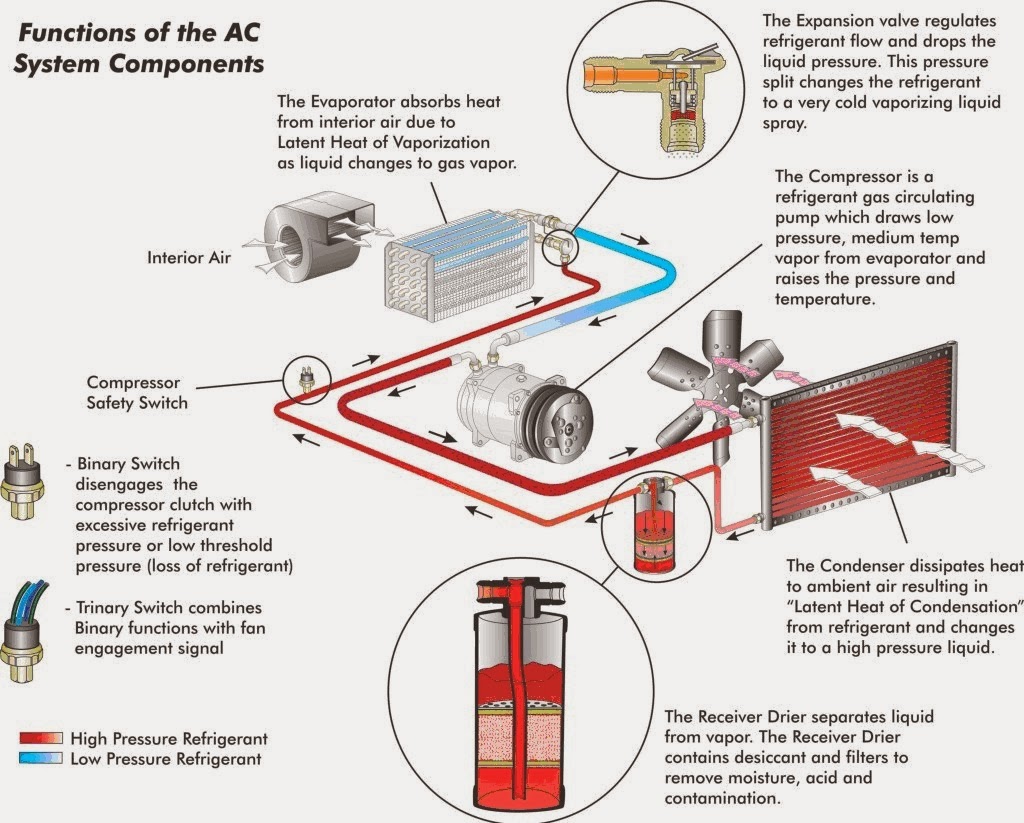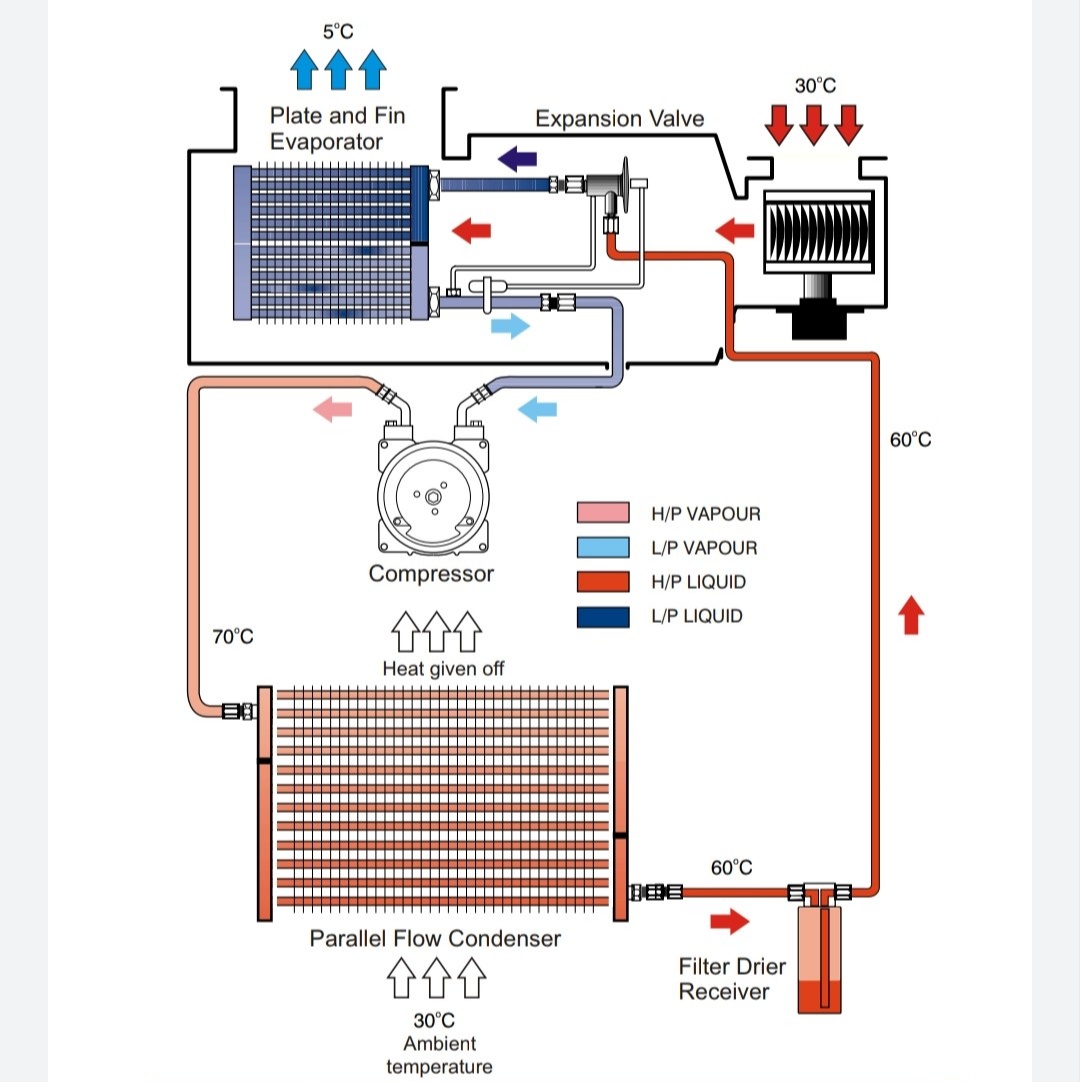Beat the Heat: Understanding Your Car's AC System

Is there anything worse than stepping into a scorching hot car on a summer day? Your car's air conditioning system is a complex network of interconnected parts working together to provide a comfortable driving experience. Understanding these automotive air conditioning components is crucial for maintaining a cool cabin and ensuring the system operates at peak efficiency. This article will explore the inner workings of your car's AC, offering insights into its crucial components and how they contribute to your comfort.
Imagine a hot summer day. You start your car, turn on the AC, and are greeted by a blast of cool, refreshing air. This seemingly simple process involves a fascinating interplay of various components within your vehicle's air conditioning system. From the compressor that pressurizes the refrigerant to the evaporator that absorbs heat, each part plays a vital role. This article will delve into the core elements of an automotive air conditioner, explaining their function and importance.
The history of automotive air conditioning can be traced back to the early 20th century, with the first systems appearing in luxury vehicles. Over time, car AC systems have evolved significantly, becoming more compact, efficient, and affordable. Early systems were bulky, expensive, and often unreliable. Today's systems utilize advanced refrigerants and computerized controls, offering superior cooling performance and improved fuel efficiency.
The importance of a properly functioning car AC system goes beyond mere comfort. It contributes to driver safety by preventing heatstroke and fatigue, especially during long drives in hot weather. Moreover, a well-maintained AC system helps preserve the car's interior by reducing humidity and preventing the growth of mold and mildew. Understanding the key elements of the system, like the condenser, expansion valve, and receiver/dryer, is essential for ensuring optimal performance.
One of the most common issues with automotive air conditioners is refrigerant leaks. These leaks can lead to reduced cooling performance and eventually a complete system failure. Other problems can include compressor malfunction, electrical issues, or blockages in the system. Regular maintenance and inspections are vital for identifying and addressing these problems before they escalate. Identifying the source of a malfunction often requires a thorough understanding of the various automotive AC components and their interrelationships.
The refrigerant, a special fluid, is the lifeblood of the system. It circulates through the various components, absorbing and releasing heat. The compressor pressurizes the refrigerant, turning it from a gas to a high-pressure, high-temperature gas. The condenser then cools and condenses this gas into a high-pressure liquid. This liquid refrigerant then passes through the expansion valve, reducing its pressure and temperature. Finally, the low-pressure, low-temperature liquid refrigerant enters the evaporator, absorbing heat from the cabin air and transforming back into a gas. This cycle repeats continuously to maintain a cool cabin temperature.
Three primary benefits of a well-functioning auto AC system are comfort, safety, and improved air quality. Comfort is self-explanatory, especially in hot climates. Safety is enhanced by preventing heat-related illnesses and driver fatigue. Improved air quality results from the system's ability to filter out dust, pollen, and other airborne contaminants.
Advantages and Disadvantages of Modern Automotive Air Conditioning Systems
| Advantages | Disadvantages |
|---|---|
| Improved comfort and reduced driver fatigue | Increased fuel consumption |
| Better air quality through filtration | Potential for refrigerant leaks and environmental impact |
| Protection of car interior from heat and humidity | Maintenance costs |
Regular maintenance of automotive air conditioner systems is crucial for ensuring optimal performance and longevity. This includes periodic checks of the refrigerant level, inspection of hoses and connections for leaks, and cleaning or replacing the cabin air filter.
One real-world example is a clogged expansion valve. This can restrict refrigerant flow and lead to poor cooling performance. Another example is a leaky condenser, which can cause the system to lose refrigerant and eventually stop functioning altogether.
A common challenge is diagnosing the cause of a malfunctioning AC system. Specialized tools and knowledge are often required to pinpoint the issue accurately. Solutions range from simple repairs like recharging the refrigerant to more complex procedures like replacing the compressor or other components.
FAQ:
Q: Why is my AC blowing warm air?
A: Several factors can cause this, including low refrigerant, a faulty compressor, or a blocked evaporator.
Q: How often should I service my car's AC?
A: It's generally recommended to have your car's AC system inspected annually.
Q: What is the role of the receiver/dryer?
A: The receiver/dryer stores refrigerant and removes moisture from the system.
Q: What type of refrigerant is used in car AC systems?
A: Most modern car AC systems use HFC-134a refrigerant.
Q: Can I recharge my car's AC myself?
A: While DIY recharge kits are available, it's generally recommended to have a professional service your AC system.
Q: How can I improve my car's AC efficiency?
A: Parking in the shade, using sunshades, and ensuring proper airflow can improve AC efficiency.
Q: What are the signs of a refrigerant leak?
A: Signs of a leak include weak airflow, warm air from the vents, and a hissing sound from the AC system.
Q: How can I prevent AC problems?
A: Regular maintenance, including inspections and refrigerant checks, can help prevent AC problems.
A valuable tip for maintaining your car's AC is to run the system for a few minutes every week, even during the winter months. This helps to circulate the refrigerant and lubricate the system's components, preventing seals from drying out and cracking.
In conclusion, the automotive air conditioning system is a complex yet essential component for a comfortable and safe driving experience. Understanding the various automotive air conditioning components, their functions, and the importance of regular maintenance is crucial for keeping your car cool and comfortable, especially during the hottest months. From the compressor that pressurizes the refrigerant to the evaporator that absorbs heat, each element plays a vital role. Regular maintenance, including refrigerant checks and inspections, can help prevent costly repairs and ensure optimal performance. By understanding the intricacies of your car's AC system, you can proactively address potential issues and enjoy a refreshing drive, regardless of the weather outside. Investing in regular checks and addressing minor problems promptly can save you from expensive repairs down the road and keep you cool and comfortable behind the wheel for years to come. Don’t let the heat win; take care of your car’s AC system, and it will take care of you.
The undiscovered appeal of behr paints fresh tone palette
Nissan rogue ratings decoded
The quiet hum of control dometic 3312022000













